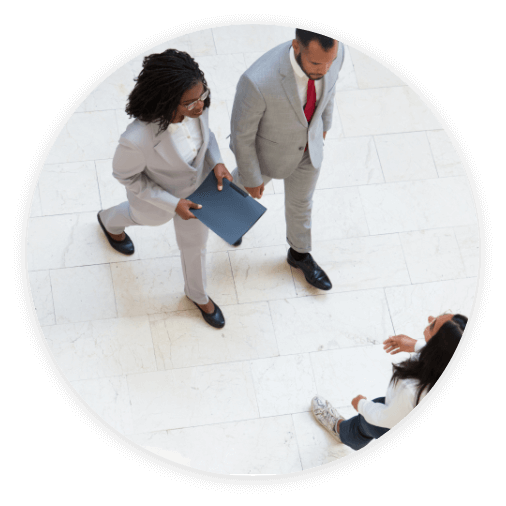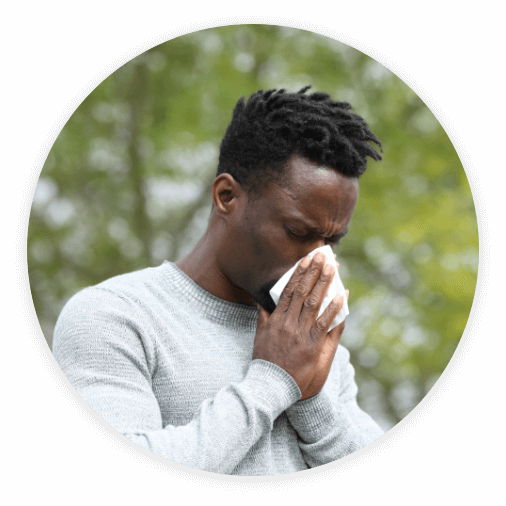Stay Home Stay Safe
What is Self-Quarantine?
Persons who may have been exposed to COVID-19 are asked to quarantine themselves (separate themselves from others) for a period of 14 days. The 14 days are based on the time it usually takes for symptoms to show. If the 14 days end without symptoms, persons can end their self-quarantine, however they must continue practicing:
- social distancing,
- washing of hands frequently
- cleaning and disinfecting frequently touched surfaces and objects daily follow and comply with the current country wide recommendations to limit and reduce the spread of the coronavirus.
If symptoms occur,
The quarantined person should practice the following:
- Stay alone in a well-ventilated room
- Always cover your cough or sneeze with a tissue and throw it away in a covered bin.
- Wash hands using soap and water before and after using the bathroom, coughing and sneezing.
- Avoid touching eyes and mouth especially after sneezing or coughing.
- Have little or no contact with other members of the household and restrict visits from family/friends.
- Restrict members of the household from utilizing the same bathroom.
- Caregivers should wear a mask when in the same room as the exposed person.
- The exposed person should wear a mask if they have to access other common areas of the household or if a caregiver needs to enter their room to offer assistance.
- Masks should not be touched or handled during use. If the mask gets wet or becomes dirty, it must be replaced immediately with a clean dry mask.
- Masks should not be reused
The practices of household members of the quarantined person:
- Wash hands with soap and water or use 62-70% alcohol based sanitizer after every contact with the exposed person’s room, bathroom or handling their linen. Use paper towels to dry hands after washing.
- Separate the exposed person’s linen and clothing from the rest of the household and wash separately. Sun dry all linen.
- Maintain good ventilation in shared household areas, by keeping windows and doors open.
- Keep surfaces in the area of use, especially bedside tables and bathroom, clean.
- Remove garbage from the area inhabited by the exposed person in black garbage bags and discard as per normal schedule.
- Use plastic disposables when providing food to minimize washing. If not available, then wash utensils before and after use with soap and water.
- Avoid sharing.
Cleaning/ Environmental Control:
Clean the following used by quarantined persons:
Objects/SurfacesSurfaces that are touched regularly (e.g. door handle, light switch, bedside table, toys, keyboard, cell phone) with mild disinfectants such as Lysol, Pine Sol and 62-70% alcohol. Clean and allow to air dry.
FloorsFloors should be clean weekly using soap and water first and then mild disinfectant (e.g. Pine Sol or 5% bleach (i.e. Ajax, Chloro-do etc.) after and allow to air dry.
LinenLinen should be changed and washed weekly.
NOTE: A pair of industrial gloves should be used while undertaking all cleaning procedures. Gloves can be discarded or placed outside to air dry. Two (2) cleaning rags, a mop and bucket must be dedicated to the bathroom/bedroom used by the quarantined person and not to be used to clean any other area of the household.
What is self – isolation?
Staying at home because of experiencing one or more symptoms of COVID-19 such as fever, cough or shortness of breath. It is separating one’s self from others in order to protect them from the possibility of getting the illness.
The Practices of a Self-Isolated Person
- Stay within one area of the house away from other members of the household
- No visitors should be allowed
- Avoid contact with older persons or those with chronic health conditions
- Drink plenty of water and take paracetamols to help with pain
- Person should wear a mask when accessing common areas of the household. For persons who cannot tolerate wearing a mask, he/she should ALWAYS cover their coughs and sneezes with paper tissue. Materials used to cover the mouth and nose should be thrown away in a trash bin and hands should be washed immediately.
- Follow advice of your Health Care Provider or information from the Ministry of Health and Wellness toll lines.
The practices of household members of the isolated person:
- Wash hands with soap and water or use 62-70% alcohol based sanitizer after every contact with the exposed person’s room, bathroom or handling their linen. Use paper towels to dry hands after washing.
- Separate the exposed person’s linen and clothing from the rest of the household and wash separately. Sun dry all linen.
- Maintain good ventilation in shared household areas, by keeping windows and doors open.
- Keep surfaces in the area of use, especially bedside tables, and bathroom, clean.
- Remove garbage from the area inhabited by the exposed person in black garbage bags and discard as per normal schedule.
- Use plastic disposables when providing food to minimize washing. If not available, then wash utensils before and after use with soap and water.
- Avoid Sharing
Cleaning/ Environmental Control:
Clean the following used by isolated persons:
Objects/SurfacesSurfaces that are touched regularly (e.g. door handle, light switch, bedside table, toys, keyboard, cell phone) with mild disinfectants such as Lysol, Pine Sol and 62-70% alcohol. Clean and allow to air dry.
FloorsFloors should be clean weekly using soap and water first and then mild disinfectant (e.g. Pine Sol or 5% bleach (i.e. Ajax, Chloro-do etc.) after and allow to air dry.
LinenLinen should be changed and washed weekly.
NOTE: A pair of industrial gloves should be used while undertaking all cleaning procedures. Gloves can be discarded or placed outside to air dry. Two (2) cleaning rags, a mop and bucket must be dedicated to the bathroom/bedroom used by the isolated person and not to be used to clean any other area of the household.
Isolation in a Facility
Persons who are isolated in a health facility due to the manifestation of symptoms of COVID-19 and have been confirmed positive for COVID-19 will remain there until the following happens:
- The symptoms end
- After 4 days of being asymptomatic (without symptoms), the COVID-19 test is repeated. If the test is negative, the test is repeated 2 days later.
- After 2 negative tests, the patient is discharged.
- If the COVID-19 test is positive, the patient remains until 2 negative tests have been achieved.
After two negative tests the patient can be released and sent home. Upon release the patient will be given a Release Form and a Medical Certificate.
Know How it Spreads
- There is currently no vaccine to prevent coronavirus disease 2019 (COVID-19).
- The best way to prevent illness is to avoid being exposed to this virus.
-
The virus is thought to spread mainly from person-to-person.
- Between people who are in close contact with one another (within about 6 feet).
- Through respiratory droplets produced when an infected person coughs or sneezes.
- These droplets can land in the mouths or noses of people who are nearby or possibly be inhaled into the lungs.

Take steps to protect yourself

Clean your hands often
- Wash your hands often with soap and water for at least 20 seconds especially after you have been in a public place, or after blowing your nose, coughing, or sneezing.
- If soap and water are not readily available,use a hand sanitizer that contains at least 60% alcohol. Cover all surfaces of your hands and rub them together until they feel dry.
- Avoid touching your eyes, nose, and mouth with unwashed hands.

Avoid close contact
- Avoid close contact with people who are sick
- Stay away from others: As much as possible, you should stay in a specific “sick room” and away from other people in your home. Use a separate bathroom, if available.
-
Limit contact with pets & animals: You should restrict contact with pets and other animals, just like you would around other people.
- Although there have not been reports of pets or other animals becoming sick with COVID-19, it is still recommended that people with the virus limit contact with animals until more information is known.
- When possible, have another member of your household care for your animals while you are sick with COVID-19. If you must care for your pet or be around animals while you are sick, wash your hands before and after you interact with them.
Take steps to protect others
Stay home if you’re sick
- Stay home People who are mildly ill with COVID-19 are able to recover at home. Do not leave, except to get medical care. Do not visit public areas.
- Stay in touch with your doctor. Call before you get medical care. Be sure to get care if you feel worse or you think it is an emergency.
- Avoid public transportation: Avoid using public transportation, or taxis if possible.

Cover coughs and sneezes
- Cover:Cover your mouth and nose with a tissue when you cough or sneeze or use the inside of your elbow.
- Dispose:Throw used tissues in a lined trash can.
- Wash hands:Immediately wash your hands with soap and water for at least 20 seconds. If soap and water are not available, clean your hands with an alcohol-based hand sanitizer that contains at least 62% alcohol.

Wear a facemask if you are sick
- If you are sick: You should wear a facemask when you are around other people and before you enter a healthcare provider’s office.
- If you are caring for others: If the person who is sick is not able to wear a facemask (for example, because it causes trouble breathing), then people who live in the home should stay in a different room. When caregivers enter the room of the sick person, they should wear a facemask. Visitors, other than caregivers, are not recommended.

Clean and disinfect
- Clean AND disinfect frequently touched surfaces daily. This includes tables, doorknobs, light switches, countertops, handles, desks, phones, keyboards, toilets, faucets, and sinks.
- If surfaces are dirty, clean them: Use detergent or soap and water prior to disinfection.
- Wash hands: Wash your hands often with soap and water for at least 20 seconds. This is especially important after blowing your nose, coughing, or sneezing; going to the bathroom; and before eating or preparing food.
- Hand sanitizer: If soap and water are not available, use an alcohol-based hand sanitizer with at least 62% alcohol, covering all surfaces of your hands and rubbing them together until they feel dry.
- Soap and water: Soap and water are the best option, especially if hands are visibly dirty.
- Avoid touching: Avoid touching your eyes, nose, and mouth with unwashed hands.

Monitor your symptoms
- Seek medical attention, but call first: Seek medical care right away if your illness is worsening (for example, if you have difficulty breathing).
- Call your doctor before going in: Before going to the doctor’s office or health facility or emergency room, call ahead and tell them your symptoms. They will tell you what to do.
- Wear a facemask: If possible, put on a facemask before you enter the building. If you can’t put on a facemask, try to keep a safe distance from other people (at least 6 feet away). This will help protect the people in the office or waiting room.
- Follow care instructions from your healthcare provider and local health department: Your local health authorities will give instructions on checking your symptoms and reporting information.
